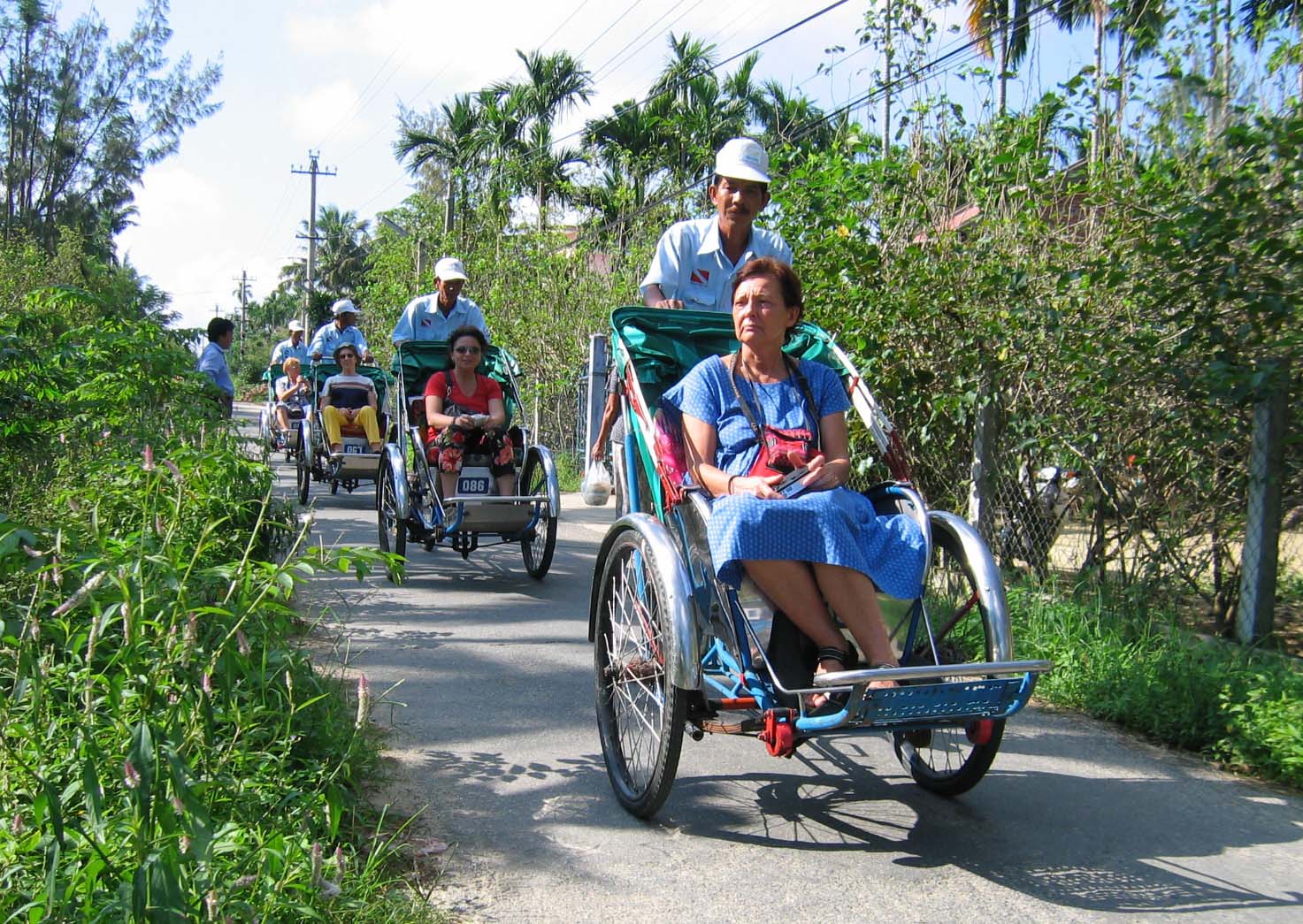It is funny how my job moves from place to place. I work mostly as an educational consultant but also do a lot of hotel training. A former client contacted me recently to discuss a hotel training plan and during our discussion, she mentioned that she was cooperating with one of her relatives to open a ‘homestay’ but she had no idea what a homestay is.
A homestay is a local family, often an ethnic minority hosting a tourist in their house for a few days or longer. It is an up-close opportunity for the tourists to experience rural life and gain a better appreciation of the cultural differences between western living and the more rustic life of the natives.
The meeting was in a rural back area of Hoi An Ancient Town, a UNESCO World Heritage Site in central Vietnam, and the road back to town was tough.
As I left and dodged the traffic on the dusty ‘road’ in the afternoon sunshine, my mind kept drifting back to what she had said.
Suddenly, bouncing along, skidding around pot-holes, sleepy dogs and old women walking in slow motion across the dirt track, I started noticing how many little homestay signs there were.
I never realized just how many there were. In my own area in the town, they are springing up faster than the rice after a summer storm. However, these are beginning to blur the line between hotels and homestays. They are closer to guesthouses – smaller versions of a hotel.
Most are simply large luxury houses with services for the tourists who are staying with the families - or sometimes alone. No swimming pools and uniformed waiters with mojitos and margaritas handy but the prices are good for something feeling a little less commercial and situated in the outer neighborhoods, giving a sense of living among the locals.
Over the last ten years or so, it has become a booming niche tourist sector particularly in the north, the central coastal provinces surrounding Hoi An, where I live, and Hue and the Central Highlands. Its popularity is growing due to the economic benefits of tourism for remote areas. The idea has been around for years and is often confused in some countries with homestays for students studying aboard.
The Vietnamese Ministry of Sports, Culture and Tourism noted last year that homestays are valuable income generators for women and low income households, yet a market survey they conducted showed that the “incomes were low due to a lack of English ability, understanding tourist needs and poor business skills.” No surprise there, who actually knows what the foreigner wants? A flushing toilet –What’s that? Just kidding!
That is the problem – everyone is doing it but are they doing it well? Most of the Ethnic Minority Homestay projects have received some support, training and business counseling as they have started up yet it is very unclear how many of the modern homestays along the central coast are operating well enough to encourage further tourism.
A large part of the current training content is focusing on making the countryside stays more comfortable for foreigners. Mostly gone are the days of the bamboo beds, choking over the kitchen fire or shivering from the cold water baths! Also, teaching basic business ideas in marketing and customer satisfaction, building good relationships with the tour operators and agencies. And it’s working. It’s the town homestays that need some more direction and supervision.
The main problem now is to provide that ‘local’ feel. Why not take your guests for an evening walk around? Or introduce them to the local coffee house? Heck, take that fat old tourist into the center of town yourself on that little Honda Cub!
Provide some basic real information on finding the old town in Hoi An or getting to the tourist spots with a decent map. Quite a few homestays are quite far from the centre of town and lighting is not the best so a map for the taxi or a transport service is totally necessary. Building comfortable houses is fine but without suitable support services – where to go, what to do, acceptable house rules as many tourists want to go out and come back later and avoiding that ‘rip-off’ situation – charging too much for basic items, Internet or bottled water being a great example! Guests are ‘captives’. One tourist told me he felt trapped when he complained about his room being too hot – no air-cons – and the proprietor just told him to go find another place. The trouble was he had no idea where he was and it was nighttime.
It is not all bad. Compared to quite a lot of larger hotels, the homestays are far more relaxing and fun simply for checking out how the locals get on. If you’re in the right area, you can watch the local farmers or observe the local building techniques. Mind you, I can’t promise that the loudspeakers, the pig smells from over the road or the mosquitos from the rice fields, will not wake you up but you did want the simple life, right?
And remember home is where the heart is!





















































